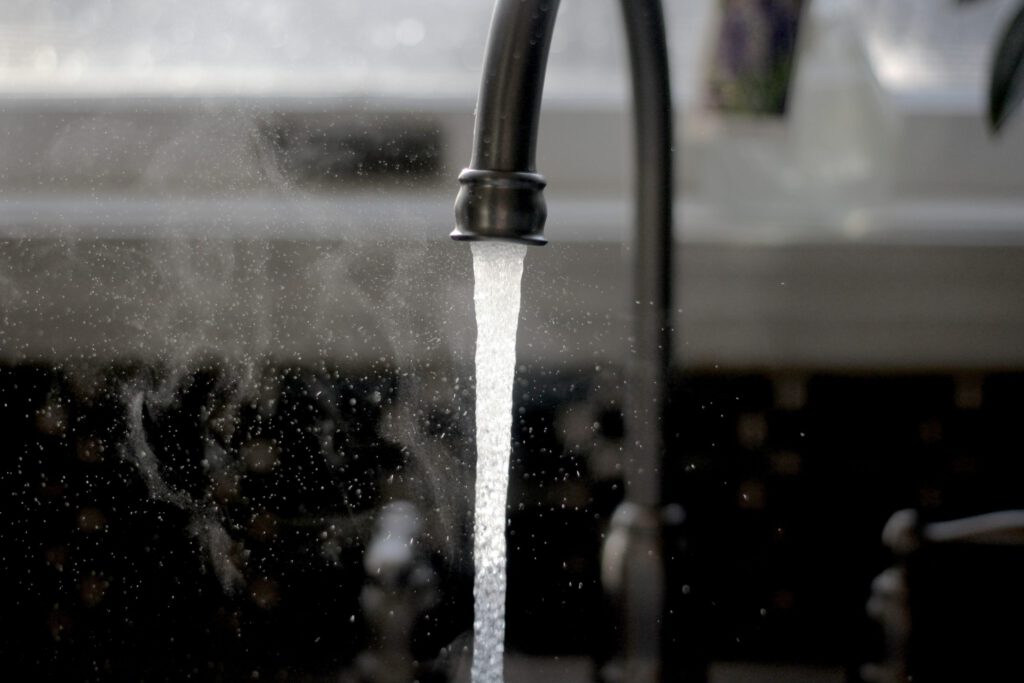Imagine opening up the tap to get ready to drink some cool, refreshing water or start cooking only to have brown, dirty, contaminated water come back. It may not even be brown and still be contaminated, but you wouldn’t know until your customers and employees started to become ill from consuming it. Prevent havoc and mayhem and prevent backflow failure with proper backflow maintenance.
Backflow prevention devices protect the water supply from contamination. You find these devices installed at cross-connections. Cross-connections are points where potable water can come into contact with non-potable water such as your irrigation system. If backflow occurs, contaminated water is forced back into the potable water supply, posing serious health risk, potential fines or even shutdown. Commercial backflow devices need regular inspection to ensure they operate properly and don’t pose a threat. If a backflow device fails inspection, repairs or replacement must happen immediately. In this article, we will cover signs to look out for to prevent backflow failure.
How Can My Backflow Device Fail?
There are a number of reasons why a commercial backflow device may fail inspection. Some of the most common causes include:
- Debris. Debris builds up in the backflow device, preventing it from sealing properly. This occurs when sediment in the water supply, construction debris, or even small pieces of plastic or metal go down your drain.
- Corrosion. Corrosion damages the seals and components of a backflow device over time, making it ineffective. This typically occurs in older or ill-maintained devices.
- Improper Installation. If a backflow device is not installed properly, it may not prevent backflow. This common problem is seen in backflow device installed by unlicensed or inexperienced plumbers which is why using a licensed professional is advised.
- Mechanical Failure. The components of a backflow device fail over time, causing the device to malfunction. This is more likely to occur in older devices or ones that experience a lot of use.
What Should I Look For?
If you suspect your commercial backflow device may be failing, there are a few things you can look for including leaks, discoloration, or erratic operation.
Leaks
If you begin to notice leaks around your backflow device it could be a sign of it not being sealed properly. A lack of seal will cause your device to malfunction, so be sure to call a professional as soon as your notice before it leads to structural damage to your facility. Mold, mildew, odors, and water damage all occur if not taken care of.
Discoloration
Turning on the water to get brown, yellow, or any other color water beyond clear is a sign something in your plumbing system is askew. Contacting your local, professional plumber immediately for them to look into the problem.
Erratic operation
A backflow device needs a certain amount of pressure to operate optimally. Without it, you can have erratic pressure which causes your device to fail and contaminate the water supply. In some cases, it may cause structural damage to your building.
If you notice any of these signs, have your backflow device inspected by a qualified plumber. A failed backflow device poses a serious health risk, so take action as soon as possible.
What Can I Do to Prevent Backflow Failure?
- Inspect your backflow device regularly. This is the best way to ensure that the device is operating properly and that it will not fail inspection.
- Maintain your backflow device. This includes keeping the device clean and free of debris. Also, replacing any worn or damaged components.
- Having a professional install your backflow device. This ensures your device operates properly.
- Use a qualified plumber. While we know a lot as facility managers, general managers, etc. We don’t know everything. Working with a qualified plumber ensures proper maintenance on your device to prevent backflow failure.
In Conclusion
Your backflow devices protect your facility from potential disasters and environmental issues. By following these tips, you help to prevent your commercial backflow device from failing inspection and protect the public water supply from contamination. It’s not recommended to perform repairs or replacement on your own as it needs to be completed by a trained, licensed professional or facility management company such as SLM Facility Solutions Nationwide. SLM Facility offers over 30 facility maintenance services including HVAC, Handyman, Backflow, and more. Contact us today to speak to a SLM Facility Representative to see how we help you with your backflow.
Looking for more information regarding backflow devices, visit the following websites or contact SLM Facility.



